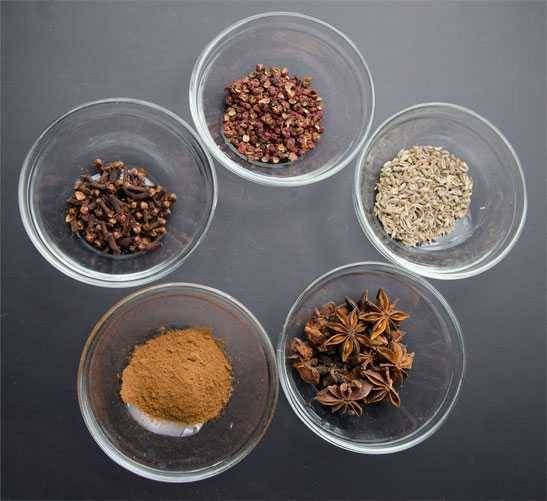Herbs and Spices - Chinese Five Spices

Chinese Five Spices
Although the exact origins of five-spice powder are lost to history, there is some thought that the Chinese were attempting to produce a "wonder powder" encompassing all of the five elements—wood, fire, earth, metal, and water. These elements are represented by the five flavors sour, bitter, sweet, pungent, and salty. Then again, it's possible that a cook accidentally stumbled upon this particular combination of spices, and realized its power to enliven the blandest dish. Whatever the case, there is no doubt that five-spice powder is unique.
Of course, these days the specific combination of spices used to make up five-spice powder varies. A standard recipe calls for fennel, cloves, and cinnamon, along with star anise and Szechuan peppercorns. However, you'll also find five-spice powder made with cassia (a member of the same family as cinnamon), ginger, nutmeg, and even licorice (star anise has a wonderful licorice flavor). Feel free to experiment with different varieties until you find the one you like best.
Benefits:
1.Consist of fiber, iron and calcium
2.Encourage proper organ function, promote circulation and stimulate appetite.
Serving way:
Five-spice powder adds a spicy kick to dry rubs or marinades for meat, fish, or poultry. It goes particularly well with pork or you can rub it onto chicken before you roast it. It will also add a Chinese twist to vegetables and even to a fruit salad.